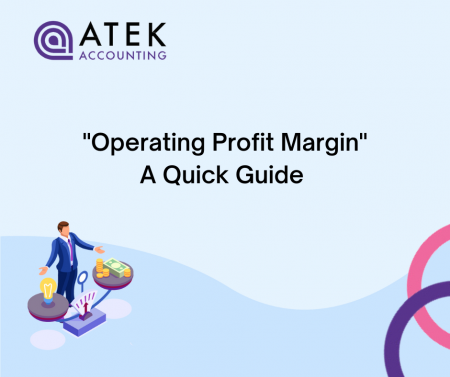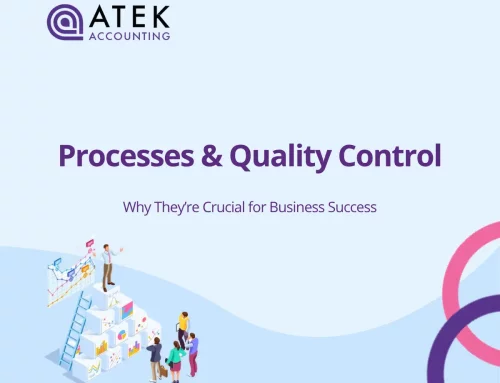
Do you know how efficient your business operations are? When monitoring your finances, it’s important to know that not all profit margins are the same. You might focus on overall profit, but different margins reveal different perspectives. One of the most insightful? Your operating profit margin.
But what exactly does this metric measure, and how does it differ from gross and net profit?
What Is Operating Profit Margin?
The operating profit margin is a key measure of your business’s profitability.
It shows you how much profit your business is making from its core operations after deducting the cost of goods sold (COGS) and operating expenses.
It differs from your gross profit margin because it doesn’t include other income or expenses, such as interest on loans, return on investments, or taxes.
On the other hand, net profit is what’s left of your profit after you’ve deducted all expenses, including taxes.
Not only does operating profit give a clearer picture of how well your business manages its overall operations, but there are also many reasons why it’s crucial for your business efficiency.
Why is Operating Profit Margin Important?
Tracking your operating margin is important for understanding how effectively your business is being run.
A high margin indicates efficient operations, strong profitability, and good cost management.
On the other hand, a low margin could signal problems such as insufficient sales or high operating costs.
By keeping an eye on this metric, you’ll know exactly where to focus your efforts – whether that’s reducing unnecessary costs or improving sales performance.
How to Calculate Operating Profit Margin
The first step in calculating your operating margin is to determine your operating profit.
To do this, you’ll need to know your business’s total revenue, cost of sales, and operating expenses.
Operating expenses include items like rent, wages, utilities, and insurance.
Once you have this information, calculate your operating profit by subtracting your cost of sales and operating expenses from your total revenue.
Next, divide your operating profit by your total revenue and multiply by 100 to find your operating margin.
Here’s the formula to calculate:
-
Find your Operating Profit:
Operating Profit = Total Revenue – Cost of Sales – Operating Expenses -
Calculate the Operating Profit Margin:
Operating Profit Margin = (Operating Profit ÷ Total Revenue) × 100
Example:
Let’s say your business had a total revenue of £100,000 last year. Your cost of goods sold was £50,000, and your operating expenses were £30,000. This would give you an operating profit of £20,000.
To calculate the operating margin:
Operating Profit Margin = (20,000 ÷ 100,000) × 100 = 20%
Your operating profit margin would be 20%.
Analysing Profit Margins
It can be very helpful to compare your operating margin against your gross and net profit margins.
Your operating margin will usually be lower than your gross profit margin because it doesn’t include other forms of income, such as interest or investments.
However, it should be higher than your net profit margin because it doesn’t encompass all expenses, such as taxes.
If your operating margin is lower than both your gross and net margins, it could be a sign that your business is inefficient or that your operating expenses are too high.
You should also compare your margins year-on-year because a decline could indicate that your business is becoming less profitable.
What Causes Operating Profit Margin to Increase?
Several factors can cause your margin to improve:
-
Revenue Increases: If your revenue grows but the cost of sales and operating expenses remain the same, your margin will increase.
-
Reduced Costs: Lowering your cost of sales or operating expenses (e.g., negotiating better terms with suppliers or reducing utility costs) will also improve your margin.
What Causes Operating Profit Margin to Decrease?
Your margin may decrease if:
-
Revenue Drops: If revenue falls but your costs remain the same, your margin will decrease.
-
Increased Costs: If costs rise (e.g., raw materials, rent) without an increase in revenue, the margin will decrease.
Strategies for Margin Improvement
To improve your margin, consider the following strategies:
-
Optimise Operational Efficiency: Streamline operations by identifying inefficiencies, automating processes, or investing in technology that reduces operational costs.
-
Reduce Costs: Focus on reducing the cost of goods sold (COGS) and operating expenses. Negotiate better terms with suppliers, reduce waste, or explore cheaper alternatives for overheads like utilities or labour.
-
Enhance Pricing Strategies: Evaluate your pricing structure to ensure you’re not undervaluing your products or services. Consider value-based pricing or increasing prices where possible without affecting demand.
-
Increase Revenue: Explore new sales channels, expand your customer base, or introduce new products or services to increase revenue without a corresponding rise in costs.
You can improve your operating profit margin and run your business more efficiently by putting these strategies into action.
Maximising Business Efficiency with Atek
By understanding and tracking your operating profit margin, you can get a clearer picture of how efficiently your business is running and make smarter, data-driven decisions.
Take a moment to reflect on your current margins – are there areas where you could improve? Perhaps reducing costs or streamlining your operations can help.
Atek can help you track your profit margins and use them to compare your performance against other businesses in your industry.
With this information, you can make smarter business decisions that make your business stronger and more competitive.
Want peace of mind knowing that your decisions are based on accurate and reliable financial information? Give us a call, and we can help.
More resources:













